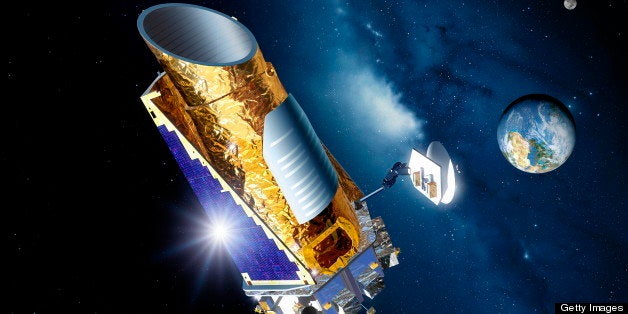
It's the default premise in science: If you observe something in nature only once, you assume that what you've seen is typical. That's because "typical" is just another way of saying "most probable."
Consequently, ever since Copernicus redrew the blueprint of the cosmos nearly five centuries ago, we've assumed that there would be other planets that resemble ours, situated in solar systems like our own.
Well, in 1995, we finally found a planet in someone else's solar system, and it deep-sixed the default assumption. This world was unlike any planet we knew. 51 Peg b, with at least half the mass of Jupiter, raced around its sun in only 4 days. Compare that to tiny Mercury -- the speediest member of the Sun's brood -- which takes 88 days to orbit once.
51 Peg b was unexpected, and so were many of the worlds uncovered in the first decade of exoplanet discovery. Lots of so-called hot Jupiters were found, massive, gaseous bodies that pirouetted around their host stars in orbits that were often as tight as that of 51 Peg b. More recently, thousands of so-called super-Earths have been discovered -- planets somewhat larger than our own, and without peer among our solar system siblings.
These results are surprising: but they are also discomfiting. Could it be that our planet isn't typical at all? If so, then maybe life isn't typical either. On the other hand, if there are plenty of planets similar to Earth, we can reasonably hope for lots of cosmic company.
The mission of NASA's Kepler telescope is to lift the scales from our eyes, and reveal to us just how typical our home world is. Kepler operates by measuring the dimming of stars as planets pass ("transit") in front of them. It has found thousands of previously unknown worlds.
But the space telescope's holy grail is to answer a straightforward question: What fraction of stars have Earth-size worlds in the so-called habitable zone -- where temperatures would allow liquid oceans. Is it one in ten, one in a billion, or what?
It's because of the simplicity and importance of this goal, and the excellent chance of reaching it, that I routinely say that Kepler is the most exciting research experiment going. Sure, my statement would probably start a brawl in a bar full of scientists. But that, at least, would be memorable.
Be that as it may, if you follow the science news you've heard that Kepler is in trouble. A reaction wheel -- an essential component for pointing the telescope -- is bedeviled by friction and has stopped. This is the second of four such wheels to fail. Since three are needed to keep the telescope accurately aimed, Kepler's keepers have shut the instrument down. They hope that a series of commands that torque the wheels will clear the material from the bearings. If that happens, the mission will collect new data for at least another year.
But what about the darker scenario? What if Kepler's data-taking days are over? Will it still have answered Question Number One: what fraction of Sun-like stars have Earth-size planets in the habitable zone?
Jon Jenkins, a senior scientist at the SETI Institute and analysis lead for the Kepler mission, offers a simple reply: "Yes."
"We all have reason to be optimistic that we can find that fraction," Jenkins says. "The only question is how much uncertainty will be in the number."
A large part of Jenkins' optimism derives from the fact that there are still two year's worth of data in the Kepler pipeline. Even if the instrument never takes another measurement, those data are in hand -- and they will be sufficient to address Kepler's prime directive.
Can we guess today what that fraction might be? A separate analysis of the first few years' of Kepler measures by Courtney Dressing and David Charbonneau at Harvard indicate that 15 percent of very small stars, called red dwarfs, host planets in the habitable zone. That's an astoundingly large fraction, and it's quite possible that Sun-like stars don't have such a high percentage of planets that might be biology friendly.
But we'll have to wait and see. The answer will come -- reaction-wheel fix or no -- within a year or two, as the data analysis continues.
It's tempting to guess that answer of course, and there's a betting pool in my office doing just that. But as Bill Borucki, a NASA space scientist and the man behind the Kepler project says, "If you don't have the data, you're speculating. You could get an equally valid answer by just asking an astrologer. We know we're missing small planets, and we need to bring them out of the noise. For now, any estimate of the fraction of Sun-like stars with habitable zone planets is pure speculation."
So yes, the jury's out, but a verdict is guaranteed. The technical glitch that has sidelined Kepler won't dull its luster. As Jenkins emphasizes, "In the grand scheme of things, we'll get the answers we seek. Only the error bars will be a little larger."
"It's the difference between using a crayon and using a Sharpie -- we'll still be able to see the picture."
Then we'll know whether our planet is typical, or as odd as a polar bear in Palm Springs.